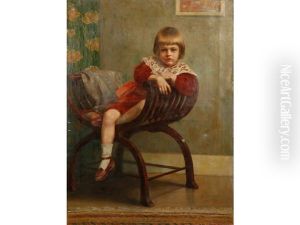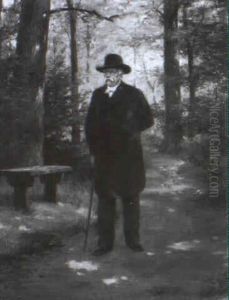Hans Wislicenus Paintings
Hermann Wislicenus, commonly known as Hans Wislicenus, was a German historical painter born on May 24, 1825, in Eisenach, which was then part of the Grand Duchy of Saxe-Weimar-Eisenach. He was known for his large-scale, dramatic paintings which often depicted scenes from German history and mythology, reflecting the 19th-century Romantic interest in nationalistic and heroic subjects.
Wislicenus showed an early interest in art and began his formal education at the Weimar Art School. He then furthered his studies at the Academy of Fine Arts in Dresden and later in Antwerp and Paris. His travels and education exposed him to various styles and techniques, which he incorporated into his work. Upon returning to Germany, he became part of the Dresden Academy and was influenced by the works of the Nazarenes, a group of Romantic painters who aimed to revive the spirituality and sincerity found in medieval and early Renaissance art.
Over time, Wislicenus developed a reputation for his mural paintings. One of his most notable works is the cycle of frescoes in the staircase of the University of Würzburg, which he completed between 1878 and 1883. These frescoes depict allegorical and historical themes and are considered some of his masterpieces. His work was characterized by a strong sense of composition and a vivid use of color, with an emphasis on dramatic lighting and realism infused with a romantic sensibility.
Throughout his career, Wislicenus received numerous honors, including appointments to academic positions and awards for his contributions to German art. His works were widely exhibited and acclaimed in his time, contributing to the cultural landscape of 19th-century Germany. Hans Wislicenus died on December 25, 1899, in Würzburg. His legacy is preserved in the form of his mural paintings, which continue to be studied and appreciated for their historical significance and artistic merit.




